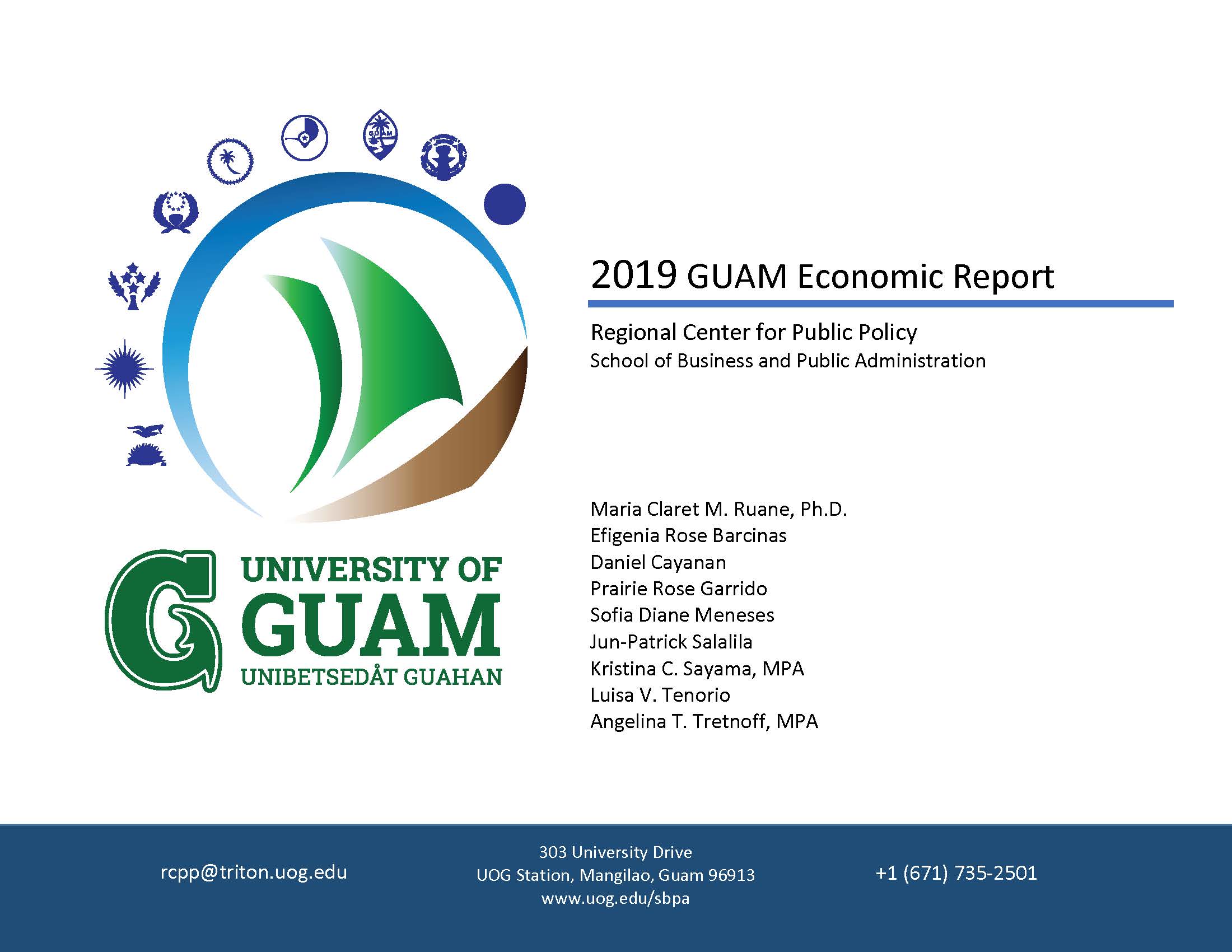UOG report makes economic predictions for Guam
UOG report makes economic predictions for Guam
UOG report makes economic predictions for Guam
1/28/2020

Guam’s economy for 2019 is expected to post growth of 0% to 1% when the real gross domestic product is officially released by the U.S. Department of Commerce’s Bureau of Economic Analysis this fall. This prediction is part of the University of Guam Regional Center for Public Policy’s 2019 Economic Report completed Dec. 30. The report also predicts a stable 0% to -0.2% growth in 2020.
“That, to me, is positive news,” said Maria Claret Mapálad-Ruane, the principal author of the report, who holds a doctorate in economics and is a professor of economics at the university. “To maintain 0% is great — and it could even be a positive 1% growth -— especially since throughout the year, many developments happen that could negatively impact our economy.”
The report takes into consideration economic factors of the past year, to include employment rates, inflation, GDP, the performance of the key economic drivers of tourism and federal spending, and changes in local and national government policies.
Slight growth in 2019
Comparing the 0% to 1% growth prediction to the potential -1% predicted by the center
last year, Ruane said the notably strong performance of Guam’s tourism was unexpected,
with record-breaking arrivals in 2019, including a 25% increase from Japan, and, most
importantly, an increase in on-island spending by Japanese visitors and an even larger
increase in spending by Korean visitors.
The other contributor to Guam’s economy in 2019 was federal government spending, which increased by more than $200 million in fiscal 2019 compared to fiscal 2018, including the $93 million increase in National Defense Authorization Act funding during the same period.
Slight decline forecasted for 2020
The forecast for 2020 of 0% to -0.2% growth is based on the following assumptions:
• a modest increase in consumer spending, driven largely by employment opportunities
from the 2020 Guam Census and the opening of the Tsubaki Tower;
• a continued decrease in business spending since 2015, as has been shown in the official
Guam GDP estimates by the U.S. Department of Commerce’s Bureau of Economic Analysis.
This is primarily due to the uncertainty of bringing in H-2B employees for civilian
projects. Some of this could also be due to the continuation of the higher business
privilege tax as well as the higher minimum wage;
• possibly a modest increase in government of Guam spending based on the prediction
of increased revenues for fiscal 2020;
• a significant decrease of $138 million in NDAA funding compared to fiscal 2019;
and
• continued growth in tourism arrivals and on-island spending similar to 2019.
“Even if the strong performance in tourism from 2019 is experienced again in 2020, the cutback of $138 million in the NDAA budget will, at best, bring the Guam economy back to 0% or even possibly -0.2% growth in the year 2020,” Ruane said.
Any additional loss of federal funding and/or visitor spending could worsen this growth forecast, the report states.
Annette T. Santos, dean of the School of Business and Public Administration, which oversees the Regional Center for Public Policy, said, “This second annual Guam Economic Report is an example of our commitment to empower local and regional stakeholders to achieve greater levels of success through research and scholarly output. We hope that this product will serve as an important resource in key leadership decisions that may affect our island and its future.”
Other contributors to the report were research fellows Efigenia Rose Barcinas, Daniel Cayanan, Prairie Rose Garrido, Sofia Diane Meneses, Jun-Patrick Salalila, Kristina C. Sayama, Luisa V. Tenorio, and Angelina T. Tretnoff.

